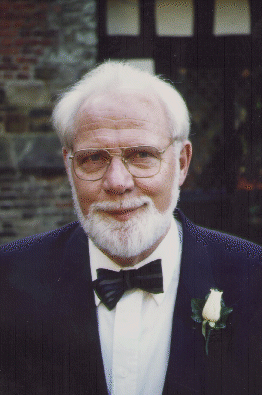Obituary J.J. de Swart
Last updated 10 April 2022

Johan de Swart passed away on June 10, 2014 in Nijmegen, the Netherlands, where he was professor of theoretical physics since 1963. He is known for his work in group theory, notably SU(3), and for his work on the nucleon-nucleon and hyperon-nucleon interactions and quark-model applications. Colleagues and students remember him as a passionate physicist and an excellent teacher.
Johan de Swart was born on January 31, 1931 in Dordrecht, the Netherlands. He studied physics at Delft Technical University. He did his PhD research on the photodisintegration of the deuteron under the supervision of Robert Marshak at Rochester University, where he obtained his doctorate degree in 1959. Already then he explored the use of the first computers, which has been one characteristic of his approach to theoretical research. After spending some time at the University of Chicago and at CERN, he was appointed in 1962, at the young age of 31, as professor of theoretical physics at the University of Nijmegen.
At CERN he worked on flavor-SU(3) symmetry, developing and establishing the conventions for the Clebsch-Gordan coefficients, tables of which have remained in the Review of Particle Properties since then. Starting already in Rochester, with Cees Dullemond, he did pioneering work on applying SU(3) symmetry to baryon-baryon interactions and continued this work in Nijmegen with several PhD students. This work is well known under the name "Nijmegen potentials". His studies of meson-exchange interactions contributed to the renowned overviews "Compilation of Coupling Constants and Low-Energy Parameters" in the 1970s. Applications in the late 1970s and early 1980s to quark models used the unitary symmetries for spin, flavor, and color to understand details in the spectrum of baryons and mesons and their excitations and to make predictions for possible multiquark states.
In the 1980s and early 1990s he developed with his group a new approach to energy-dependent partial-wave analysis (PWA) of the nucleon-nucleon scattering data, based on the so-called P-matrix and field theory for the long-range electromagnetic and strong NN interactions. This resulted in the famous and highly influential PWA93 solution and new, high-quality phenomenological NN potential models. Later developments in the 1990s incorporated chiral perturbation theory for the long-range NN interaction.
At the University of Nijmegen he gave brilliant lectures on many topics, for which he made beautiful, detailed lecture notes, often including derivations and educating the students on the required mathematical background. He also participated in the PhD schools of the first hour in the Netherlands, where many senior physicists remember lectures of him. In sharp contrast to his love of teaching stood his aversion to administration and faculty meetings, which he tried to avoid. His diplomacy was not particularly well suited for such tasks. Research and teaching were his passions.
Piet Mulders (VU University/Nikhef, Amsterdam) Tom Rijken (Radboud University, Nijmegen) Rob Timmermans (University of Groningen)
Published in Physics Today, copied with permission of the authors.
